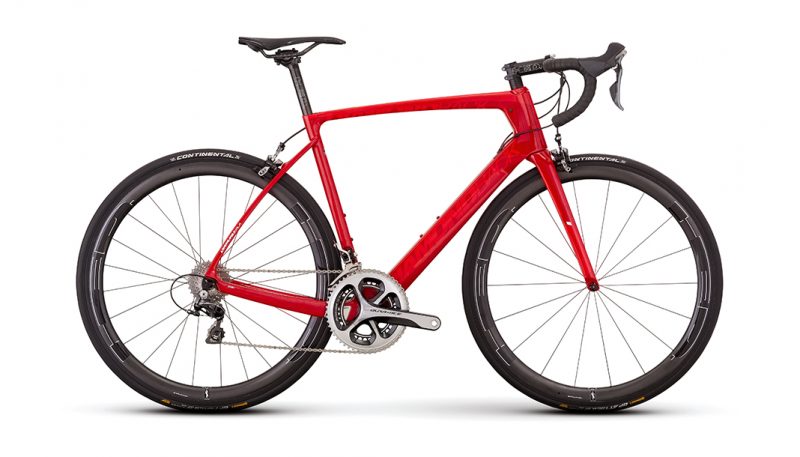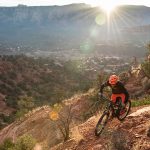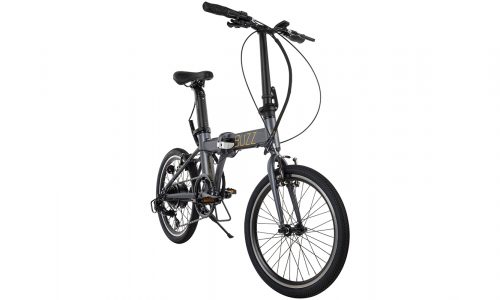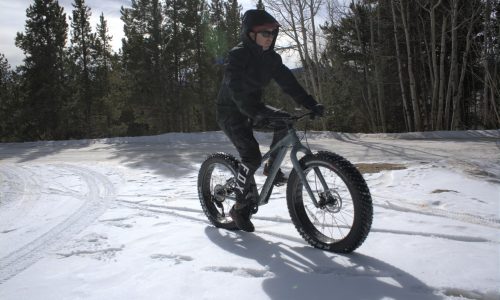Home » Gear Reviews » Biking » Road Bikes » Diamondback Podium Equipe
Diamondback Podium Equipe Review
November 30, 2016



















 90
90 The Good
- Excellent BB stiffness/power transfer
- Carbon/alloy hybrid aero wheelset
- Strategically placed aero tubing
- Excellent braking for carbon wheels
The Bad
- Not as agile in the turns
- Alloy bars too thin, flexible
- Rough ride in rear
For long steady power and out-of-the-saddle sprints or climbs, the Diamondback Podium Equipe is a stand-out in this group. The carbon frame is extremely stiff in all the right places, including the bottom bracket, rear triangle and steer tube assembly, and the Shimano Dura Ace group is always a top performer. Plus, strategically placed aero tubing plus deep-dish wheels add a huge advantage in the wind. The ride is a bit stiff and bumpy, and turning can be sluggish, but if raw speed is what you crave, this is an excellent choice.
Ride Quality
The Diamondback Podium Equipe is built for speed, pure and simple, and this means some compromise in ride quality. Shorter seatstays, stiff alloy rims, and rigid oversize tubing make compliance a bit lacking, especially when the roads get rough. But considering this bike has a slew of aero features, it’s definitely a smoother ride than most full-on Aero Road bikes. The ride position is a bit more relaxed, with a slightly longer and slacker head tube than the Specialized, for instance, which helps counter the compliance issue, and allows for a more comfort in the back and neck on longer rides. However we found the thin tubing on the bars uncomfortable on longer days—wider diameter and perhaps a flatter top would have helped.
Stiffness-to-Weight/Power Transfer
When you stomp on the pedals, the Diamondback Podium Equipe absolutely jumps forward, with no noticeable flex in the BB or rear triangle whether seated or standing. On long, straight TT-style efforts and for sprinting, this was the fastest bike in the group. The slightly heavier weight means a small sacrifice in strength-to-weight, but that’s only noticeable from a standstill or on longer climbs—it actually adds to the momentum when sprinting from a fast run-up. The only drawback was a bit of flex in the bars and head tube during explosive out-of-the-saddle efforts, but this was minor at worst.
Climbing/Efficiency
The bottom line here is the Diamondback Podium Equipe was not built for climbing—but simply thanks to its stiffness, it does fairly well uphill especially on shorter climbs. It’s a pound (or more) heavier than most pure climbing bikes, so the longer the hill, the more you’ll feel it. But on shorter power climbs the weight won’t be an issue thanks to the efficiency. And many riders will appreciate the slightly slacker geometry up front that will make longer uphill efforts a bit easier on the back.
Descending/Handling
This is where the Diamondback Podium Equipe loses some of its luster. While the bike absolutely loves to go straight and fast, turning is not as impressive and it handles somewhat like a TT bike. When initiating a turn, especially at speed, it felt like you had to force the front a bit, whereas on the best-handling bikes a slight lean will suffice. This was especially noticeable while descending—you have to brake a bit more heading into turns, and when in the turn it felt a little less stable. However when the descent straightens out, the rigid build of this bike means a super stable ride, and its extra weight means a faster downhill ride.
Components, Drivetrain, Shifting and Brakes
The Diamondback Podium Equipe features what has become the industry standard: Shimano Dura Ace 11-speed. While drivetrains have become a personal preference for many, our testing has consistently shown DA, and its little brother Ultegra, to be the smoothest shifting and most reliable of the majors, while also remaining easy to work on. Shifting is simply amazing—smooth, fast and quiet—and there are plenty of gears for all but the nastiest mountains or heaviest sprinting on the 11-28t cassette with 52/36T front rings. Our only complaint about DA is the considerably higher cost, which we don’t feel is worth the minor weight savings over Ultegra, unless money is simply not an object. Also there are no micro-adjusters on the system other than at the rear derailleur—inline barrel adjusters would be much appreciated.
The Prologo saddle with carbon rails is super light and comfortable, although some riders will need a more pronounced cutout for comfort in the nether regions, and the carbon seatpost allowed just enough flex to add some ride compliance. Less impressive was the traditionally shaped and narrow-tubed alloy handlebar, which is less comfortable and less efficient than more modern-shaped carbon bars
Wheelset
The Diamondback Podium Equipe comes with a very interesting wheelset: The HED Jet 4 Plus features alloy rims, which are covered by a 46mm aerodynamic carbon shield. While not particularly light, at almost 1700g, the wheels proved fast and felt highly aero, with only minor side-wind instability. There are some riders who worry about the potential to break carbon wheels: This won’t be an issue since the rims are alloy and the shield is flexible. This configuration also allows for a pronounced texture on the brake track, which makes these the best-braking aero wheelset we’ve come across, and heat seems to dissipate well even under long continuous braking. Another bonus is the slightly wider rims, which are better for running wider tires, say 25mm, for better overall performance.
Scott Boulbol
- FacultyBoulbol wrote the book on trail running in Colorado.Scott Boulbol is a freelance writer who has been working in the outdoor and cycling industries for about 15 years. He lives near Boston.


















